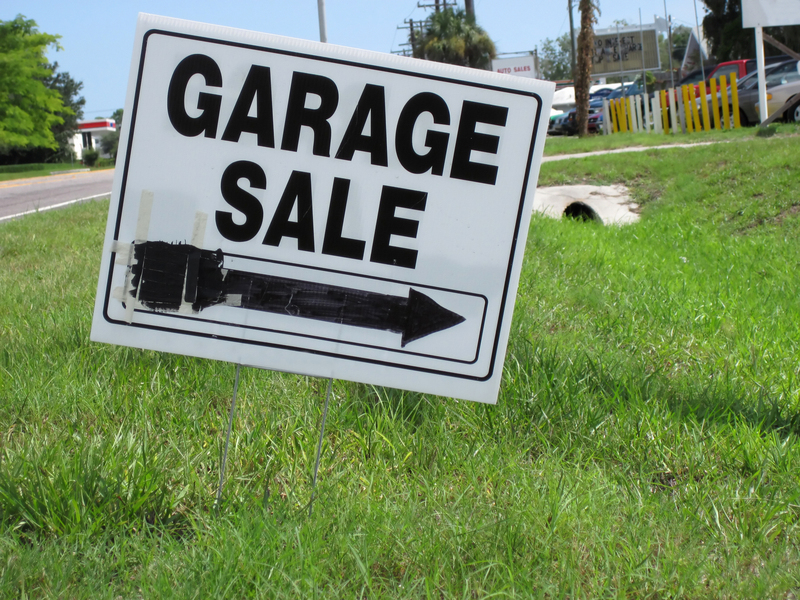Prioritizing Safety: Plastics Not Worth Using
Plastics have long been an integral part of modern life, enabling convenience, durability, and cost efficiency in countless applications. However, not all plastics are equally safe, especially when it comes to food contact, children's products, and everyday household uses. In recent years, scientific research has shed light on the potential dangers of certain types of plastics, urging consumers to rethink their choices for the sake of their health and the environment. This comprehensive article will explore the dangers of specific plastics, why safety should be a priority, and provide guidance on which plastics are not worth using and how to identify safer alternatives.

Understanding Plastic Codes and Their Risks
Every plastic product typically bears a triangular recycling symbol with a number inside it. These resin identification codes (RIC) range from 1 to 7 and correspond to distinct types of plastic, each with its own composition and potential health impacts. Knowing which numbers are safer plastics and which are plastics to avoid is crucial for anyone prioritizing safety in their daily lives.
The Seven Plastic Codes Explained
- 1: PET or PETE (Polyethylene Terephthalate)
- 2: HDPE (High-Density Polyethylene)
- 3: PVC (Polyvinyl Chloride)
- 4: LDPE (Low-Density Polyethylene)
- 5: PP (Polypropylene)
- 6: PS (Polystyrene)
- 7: OTHER (BPA, Polycarbonate, and Miscellaneous Plastics)
While some plastics are considered relatively safe for certain uses, others are not worth using due to their potential to leach harmful chemicals or their negative environmental impact. Let's break down the plastics that should be avoided, focusing on safety and health concerns.
Plastics Not Worth Using: High-Risk Types
PVC (Polyvinyl Chloride) - Code 3
PVC is a widely used plastic, found in everything from pipes and flooring to packaging and children's toys. However, it is also one of the worst plastics in terms of health and environmental safety. PVC contains additives called phthalates, used to make it flexible. These chemicals are known endocrine disruptors, linked to reproductive problems, allergies, asthma, and even certain cancers in some studies.
- Health Concerns: PVC can leach phthalates and vinyl chloride monomer, both of which are suspected or known carcinogens.
- Potential Uses to Avoid: Food packaging, children's toys, shower curtains, and tablecloths.
- Environmental Impact: PVC production and disposal release dioxins, highly toxic compounds that persist in the environment and accumulate in the food chain.
Polystyrene (PS) - Code 6
Polystyrene, commonly recognized as Styrofoam, is used for disposable cups, plates, take-out containers, and packaging peanuts. While it's lightweight and cheap, the safety risks associated with PS are significant.
- Health Concerns: PS can release styrene, a possible human carcinogen. The risk increases when in contact with hot foods or beverages, or with fatty or acidic foods.
- Potential Uses to Avoid: Hot drink cups, clamshell takeout boxes, egg cartons, and insulated food containers.
- Environmental Impact: Polystyrene is non-biodegradable and hard to recycle. It frequently ends up in oceans, breaking down into dangerous microplastics.
Polycarbonate and "Other" (BPA-Containing Plastics) - Code 7
The "Other" category (Code 7) is a catch-all for plastics that don't fit into codes 1-6. The most notorious among them is polycarbonate, often used in water bottles, baby bottles, and food storage containers. Many Code 7 plastics contain BPA (bisphenol A), which has been the subject of significant scientific scrutiny.
- Health Concerns: BPA is a known endocrine disruptor that can mimic estrogen in the body, potentially affecting brain development, immune function, and increasing cancer risk.
- Potential Uses to Avoid: Reusable water bottles, baby bottles (unless specifically labeled BPA-free), sports equipment, and certain food containers.
- Environmental Impact: Code 7 plastics are difficult to recycle and often persist in the environment for centuries.
Other Plastics to Rethink for Daily Use
Single-Use Plastics
Even plastics that are considered relatively low-risk for health, like PET (#1) and HDPE (#2), can pose hazards in certain contexts, especially when designed for single use. Single-use plastics often make their way into natural ecosystems, where they contribute to pollution and harm wildlife.
- Health Concerns: Single-use plastics are not designed for repeated use or exposure to heat, which may cause them to leach chemicals into food or water.
- Environmental Impact: These plastics populate landfills and oceans, disrupting ecological balance and introducing microplastics into food webs.
Plastic Wraps and Films
Plastic wraps and films, commonly used for food preservation, can contain potentially risky chemicals depending on their type. Some may contain additives or plasticizers that migrate into food, especially with heat exposure.
- Uses to Avoid: Microwaving food in plastic wrap or plastic films not marked as microwave-safe.
- Health Tip: Opt for glass or ceramic lids and containers for reheating food.
Why Prioritizing Plastic Safety Matters
Health Effects of Harmful Plastics
Modern research establishes a clear connection between certain types of plastics and adverse health effects. The chemicals used in their manufacture or as additives--like BPA, phthalates, and styrene--can leach into food and drinks, then be absorbed by the human body. The consequences can include:
- Hormonal imbalances and endocrine disruption
- Reproductive problems and increased risk of certain cancers
- Impaired brain and immune system development in children
- Allergies, asthma, and metabolic issues
Children and pregnant women in particular face higher risks from exposure to these contaminants, making the avoidance of certain plastics a key public health priority.
Environmental Impact: Beyond Human Health
The environmental consequences of unsustainable plastic use stretch far beyond our households. Many plastics that aren't worth using are also difficult or impossible to recycle, contributing greatly to pollution. When disposed of improperly, plastics can:
- Release toxic chemicals into soil and water
- Break down into microplastics, entering food chains and water supplies
- Cause physical harm to wildlife and disrupt marine ecosystems
Sustainable living means not only protecting our families but also the planet we share.
Safe Plastics vs. Unsafe Plastics: What's Safe to Use?
Safer Plastics
Not all plastics are inherently hazardous. Some types are generally considered safe for food use and daily interactions. Safe plastics tend to be:
- HDPE (Code 2): Used for milk jugs, juice bottles, and some food containers; leak-resistant and low in chemical leaching risk.
- LDPE (Code 4): Found in some bags and wraps, though still best not heated or reused excessively for food.
- PP (Polypropylene, Code 5): Used for yogurt cups, straws, and microwave-safe containers. Resistant to heat, making it a preferable choice for foods.
Unsafe or Questionable Plastics
- PVC (Code 3): Avoid due to phthalates and potential carcinogens.
- PS (Code 6): Avoid, especially with food and drinks.
- PC and Other (Code 7): Avoid, particularly those containing BPA or not labeled as BPA-free.
How to Identify and Avoid Plastics Not Worth Using
1. Check the Recycling Code
Always look for the recycling symbol, usually on the bottom of the product. If it's marked as 3 (PVC), 6 (PS), or 7 ("Other"), it's best to avoid, especially for food or drink contact or children's products.
2. Beware of Unlabeled Plastics
If a plastic item is not clearly labeled, it's safer to opt for a better-known and clearly marked alternative. Unlabeled or obscurely marked plastics often fall under less-regulated categories.
3. Avoid Plastics for Hot Foods and Beverages
Heating plastics (even some considered safer) can accelerate the leaching of chemicals. Use glass, stainless steel, or ceramics for hot items.
4. Choose BPA-Free and Phthalate-Free Products
Look for explicit labeling that indicates "BPA-free" or "phthalate-free", especially in baby bottles, sippy cups, and food storage containers.
5. Prioritize Reusable Over Single-Use Products
Reduce your overall plastic risk by opting for reusable, durable alternatives instead of disposable plastics, which often use less regulated and lower-quality resins.
Healthier, Safer Alternatives to Risky Plastics
Transitioning away from plastics not worth using is easier than ever, thanks to a growing market for safe and sustainable materials. Here are some healthy alternatives:
- Glass: Non-porous and inert, glass doesn't leach chemicals and is excellent for both storage and heating.
- Stainless Steel: Durable and generally safe for contact with all types of food and drink.
- Silicone: Food-grade silicone is flexible, heat-resistant, and considered safe for many uses.
- Plant-Based Bioplastics: Look for compostable or 100% plant-based plastics as an eco-friendlier option (ensure they are certified for food contact).
Steps to Reduce Your Exposure to Dangerous Plastics
- Minimize Use of Disposable Plastics: Choose reusable shopping bags, bottles, and containers.
- Opt for Fresh Foods: Avoid overly packaged food products and buy whole foods to limit contact with plastic packaging.
- Transition to Safer Containers: Use glass or stainless steel containers for food storage and transport.
- Educate Family and Friends: Spread awareness about the plastics not worth using and better, healthier alternatives.

FAQs: Prioritizing Safety and Avoiding Unsafe Plastics
Is microwaving food in plastic containers dangerous?
Only microwave in containers specifically labeled as microwave-safe and ideally not made of PVC, PS, or polycarbonate. Heating plastics can significantly increase chemical leaching.
Can I reuse water bottles made of PET (Code 1)?
PET bottles are meant for single-use. Repeated use, especially under heat, can degrade the plastic, releasing chemicals and harboring bacteria.
How do I know if a plastic item has BPA?
Look for labels or contact the manufacturer. If the item is code 7 and not explicitly marked as BPA-free, it may contain BPA.
Are "compostable" plastics always safe?
Compostable plastics made from plant sources are generally safer than petroleum-based plastics but check certifications and intended use.
Conclusion: Make Informed Choices for Safety
In a world saturated with plastic, prioritizing which plastics are safe versus those not worth using is fundamental to protecting our health and ensuring ecological sustainability. By becoming knowledgeable about plastic codes, chemical risks, and best practices, consumers can avoid plastics that pose the highest risk to humans and our planet. Remember: PVC (3), Polystyrene (6), and Polycarbonate/BPA-containing plastics (7) are the plastics not worth using, particularly for anything connected to food, drink, or children's items.
Making the switch to safer materials like glass, stainless steel, and food-grade silicone isn't just a healthy lifestyle choice--it's a vital step toward a safer, greener future. Prioritize safety, stay informed, and choose plastics that protect you and the world around you.